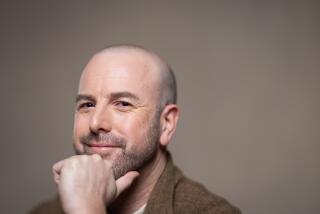Expressionistic Composer Morton Feldman, 61, Dies
- Share via
Morton Feldman, an expressionistic composer who gloried in his iconoclasm as he both irritated and intrigued audiences with esoteric exercises in form and melody, died Thursday of cancer.
He was 61 and had been in a hospital in Buffalo, N.Y., near the State University of Buffalo where he had taught for the last 15 years.
Although based in New York most of his life, Feldman taught across the country, primarily at conservatories and colleges where his works normally were performed. (He was composer in residence at CalArts in Valencia for a semester last year.)
And those works typically ran to extremes, be they the one-movement “For Philip Guston,” which went on for four hours, or his comparatively shorter (at 86 minutes) “String Quartet.”
Musicologists considered him a minimalist, a classification he dismissed as “another aspect of middlebrow America.”
Yet it was that category, probably best exemplified by John Cage, in which he most properly fit.
Minimalists are known for conceptualized indeterminacy where pitch and instrumentation are approximated. Feldman sometimes used optical graphics that replaced conventional notes on the musical staff.
Feldman and his colleagues were inspired by abstract painters and arranged sound in patterns as oblique as those sketches they admired.
Feldman never minded being out of the mainstream of music, saying dryly in a 1986 interview at CalArts that “most composers buy into the country club, but not me. I invented another game and I survived through three decades.”
He and Cage met by chance as they left a New York Philharmonic concert about 1950. Cage was at the epicenter of a school of composers who took their inspiration from the abstract painters. Feldman was to credit Cage in later years with giving him “the freedom to do what I wanted.”
Feldman was born in New York and studied piano and composition in the early 1940s. His first effort, “Projections I-IV,” premiered in 1950 and over the years the body of work he generated utilized the cello, piano, violin and human voice. He dedicated his works to friends or artists he knew or admired.
Their titles were as unusual as their sound: “Neither,” an opera for solo soprano and orchestra with a text by the playwright Samuel Beckett; “Routine Investigations,” for oboe, trumpet, piano, viola, cello and double bass; “I Met Heine on the Rue Furstenberg,” for voice and six instrumentalists, and “4 Songs to e.e. cummings.”
In a 1985 interview, Feldman said his work had progressed over the years to where scale had become more important than form. “Before, my pieces were like objects; now, they’re evolving things.”
More to Read
The biggest entertainment stories
Get our big stories about Hollywood, film, television, music, arts, culture and more right in your inbox as soon as they publish.
You may occasionally receive promotional content from the Los Angeles Times.










